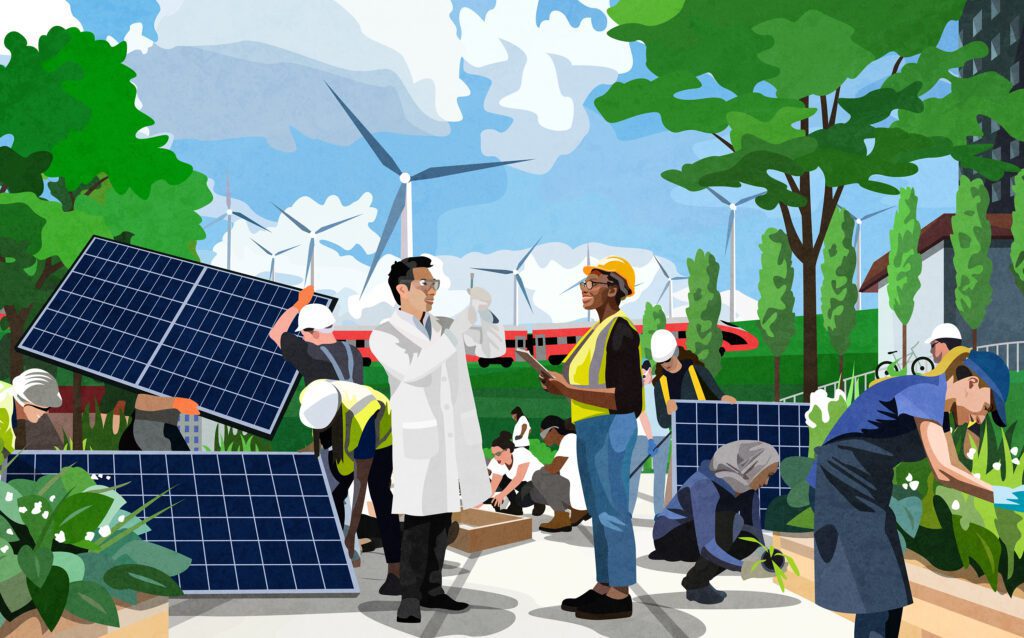Is it willful deceit or poor comprehension? Either way, the Fraser Institute’s recent take on what Prime Minister Trudeau’s carbon pricing will mean in Ontario is completely wrong.
In an article published in the Toronto Sun this week, the Fraser Institute says that Prime Minister Trudeau’s carbon price is the “last thing Ontario needs.” According to the authors, Ontario’s cap-and-trade plan likely won’t go far enough to satisfy federal rules down the road. That would mean Ottawa would apply a carbon price on top of the price imposed by the province’s cap-and-trade program, which will launch in January.
The article is sure to inflame many. But there’s a small problem with the Fraser Institute’s claim: It has no basis in reality.
The Federal government has said that provinces have a choice on carbon pricing: they can either put in a straight tax, like B.C. has, that will start at $10 per tonne of CO2 in 2018 and rise to $50 by 2022. Or provinces can use cap-and-trade, as Quebec is already doing and Ontario will soon do as well. According to Prime Minister Trudeau, cap-and-trade will be acceptable if it reduces emissions in line with the federal targets and what the federal carbon price floor is expected to accomplish.
Ontario’s system meets both these tests – the target is stronger than the federal target, and Ontario’s cap-and-trade program will reduce emissions more than Ottawa’s price will – meaning that Ottawa won’t be layering on top of Ontario’s price unless something unforeseen happens.
Ontario’s (and Quebec’s) targets exceed the national target – by a wide margin in fact. The federal target is to reduce emissions by 30 per cent by 2030 from 2005 levels. Ontario’s target is to reduce emissions by 37 per cent by 2030 from 1990 levels. Obviously a 37 per cent reduction is greater than a 30 per cent reduction, and using 1990 as a base year is also more ambitious than using 2005. The earlier the base year – the year you’re measuring reductions against – the more ambitious the target, because emissions were lower in 1990 than in 2005. So, to reiterate, Ontario’s target is more ambitious than the federal target.
A few months ago, Ontario enshrined those targets into law. And that same law stipulated that the cap – the limit on emissions – will be set with respect to the target. Or, put another way, the amount of carbon pollution allowed in the province, by law, will equal Ontario’s target, which is also set in law.
Point is, the cap-and-trade program will all but ensure that Ontario meets its target, which is stronger than the federal target, as we already saw. So Ontario’s system meets the second test- it will reduce emissions at a rate better than what the federal carbon price would do.
Yes, Ontario is planning a bunch of additional policies and incentives to reduce emissions. But many of these measures are intended to help reduce the costs of compliance for companies and individuals by helping improve energy efficiency. Or, better yet, some of these policies will help firms and people actually move away from fossil fuels altogether by making it economical to switch to geothermal energy for heating, or by making electric cars less expensive than gas-powered ones.
So, to reiterate, Ontario’s target is more ambitious than the federal target, and cap-and-trade and Ontario’s climate plan are designed to get the province to the target, meaning that Ottawa won’t impose an additional federal carbon price in Ontario, contrary to what the Fraser Institute suggests.
It’s also worth noting that the federal carbon price isn’t even designed to hit the federal government’s targets. The feds themselves have acknowledged that, and they are promising to bring other policies forward. Heavy-weight climate economist Mark Jaccard agrees; his recent analysis shows that with the $50/tonne carbon price, Canada’s emissions would likely fall by 12 per cent. If the price was increased to $100 by 2030, emissions would fall by 17 per cent – which is still well below Canada’s 30 per cent target.
There’s only one scenario in which Ontario’s plan wouldn’t suffice and that’s if the federal government dramatically increases its ambition.
To be sure, we need a stronger federal plan to meet our targets, and our targets need to be raised given that they are the weakest in the G7 and not consistent with the aspiration of limiting warming to 1.5 degrees, as agreed to in Paris. But it’s hard to imagine that the Fraser Institute analysis hinges on Canada ratcheting up ambition.
Which means that the Fraser Institute either doesn’t understand how cap-and-trade works, or what the federal government committed to do. Or it is knowingly spreading misinformation. Either way, it seems like the Fraser Institute has some explaining to do.







